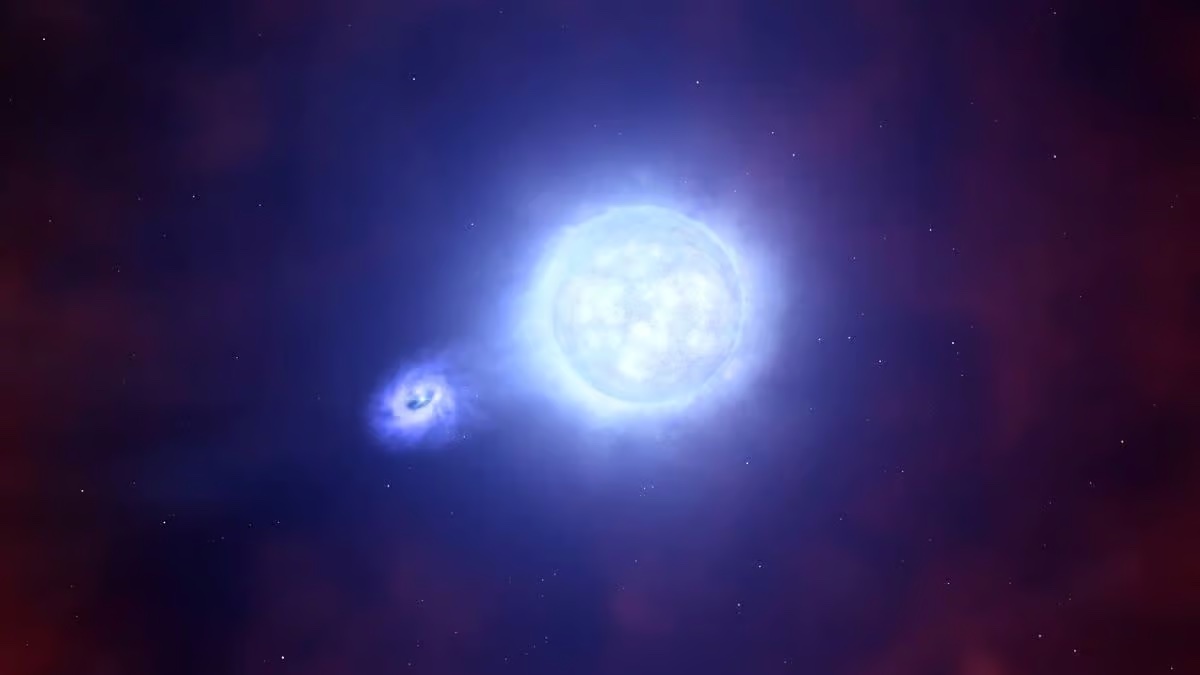11.01.2024

An artist's impression of the compact object and its companion star. Credit: ESO/L. Calçada
An amateur astronomer, good timing and a plucky companion star have come together to show direct evidence of a supernova forming a black hole-like object.
This is a huge for the astronomical community, as this is the first-time researchers have been able to watch this process happen in real time.
“Our research is like solving a puzzle by gathering all possible evidence,” said Ping Chen, a researcher at the Weizmann Institute of Science in Israel, and lead author of a study published in Nature.
“All these pieces lining up lead to the truth.”
The story starts with a discovery of a new bright object discovered by a South African amateur astronomer, Berto Monard. He found the object – called SN 2022jli – in the spiral arm of a galaxy called NGC 157 around 76 million light years away.
Seeing a new bright object appear in the sky suggests a supernova, so astronomers were quick to turn their telescopes to it, using other surveys to confirm its location and other information. Supernovas are hard to study because they are impossible to predict and quickly disappear.
A supernova is the violent explosion of a star when it dies. They collapse under their own gravity, and the resulting explosion can sometimes be as bright as entire galaxies, until they dim once again.
Black holes and neutron stars – both super dense objects produced by the collapse of stars – is what scientists are pretty sure happens next. But although we’ve seen supernovas explode before, this step – from supernovas to a compact object – has never been directly linked.
SN 2022jli didn’t play by the normal space rules. It started out bright and slowly started dimming, before brightening again a month after the discovery, and then creating weird undulations every 12 days or so for the next 200 days.
“In SN 2022jli’s data we see a repeating sequence of brightening and fading,” says Thomas Moore, a from Queen’s University Belfast, who’s study of the supernova was published last year in the Astrophysical Journal.
“This is the first time that repeated periodic oscillations, over many cycles, have been detected in a supernova light curve.”
The two teams believe that a second star – that somehow survived the supernova explosion – is the culprit, and this is what has allowed them to ‘see’ the compact object.
The teams hypothesise that the black hole or neutron star would steal hydrogen from the ‘puffy’ atmosphere of its companion. This stealing – or accretion – releases plenty of energy in waves, which is the oscillations the researchers were picking up.
“The unprecedented properties of SN 2022jli tell that whatever happens in the system should be a rare phenomenon, which might be explained by the rarity of a bound binary system surviving a supernova explosion,” the researchers write in their Nature paper.
“SN 2022jli builds a direct link between the supernova explosion and the formation of a compact object.”
Quelle: COSMOS
